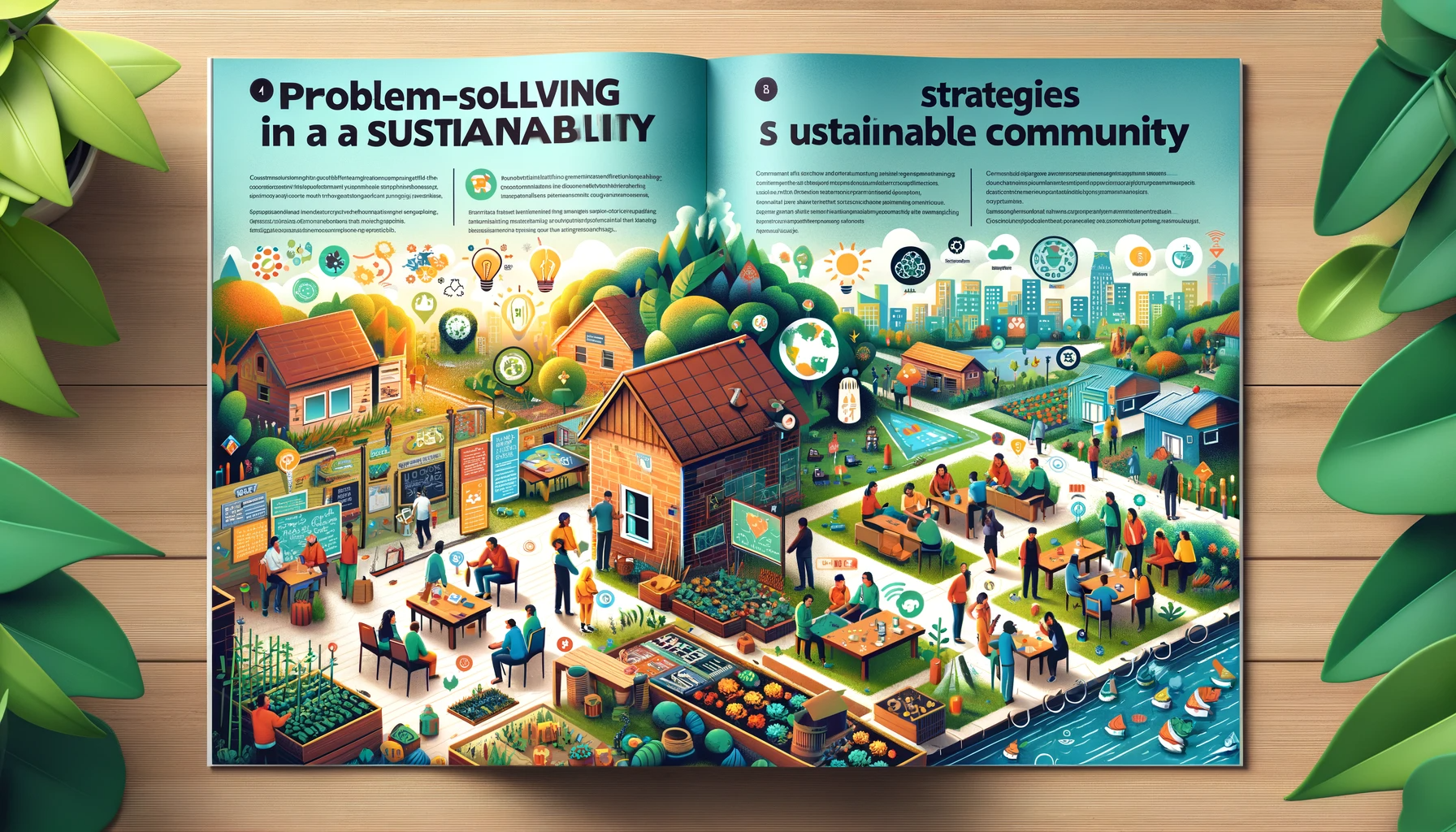As the world grows more interconnected, creating sustainable communities has become a central objective for many societies. However, these communities, just like any other, face challenges that require effective solutions. Integrating sustainability into problem-solving processes can ensure that resolutions not only address immediate concerns but also foster long-term resilience and sustainability (UN-Habitat, 2019).
Firstly, participatory decision-making is a crucial component of problem-solving in a sustainable community (World Health Organization, 2018). This strategy involves all community members in identifying, understanding, and resolving local problems. It not only fosters a sense of collective ownership and responsibility but also ensures diverse perspectives are considered (Arnstein, 1969).
For instance, engaging the community in addressing local waste management issues can lead to innovative and sustainable solutions. An emphasis on reducing, reusing, and recycling materials can transform waste from a problem into a resource, simultaneously improving the local environment and potentially creating economic opportunities (European Environment Agency, 2019).
Secondly, sustainable communities often use systems thinking in problem-solving, considering the broader ecological, social, and economic systems within which a problem exists (Capra, 1997). This approach helps identify root causes, understand interconnections, and anticipate potential impacts of proposed solutions. It’s a strategy that promotes holistic, long-term solutions rather than quick, short-term fixes (Meadows, 2008).
For example, traffic congestion might be tackled by promoting public transport, cycling, and walking, rather than simply building more roads. This not only alleviates the immediate issue but also reduces greenhouse gas emissions and promotes healthier lifestyles (Litman, 2019).
Lastly, sustainable communities tend to leverage local assets and strengths when solving problems (Kretzmann & McKnight, 1993). This asset-based community development approach can enhance community resilience and self-reliance while providing sustainable solutions.
In conclusion, effective problem-solving in a sustainable community involves participatory decision-making, systems thinking, and asset-based strategies. These approaches not only provide effective solutions but also contribute to the ongoing sustainability and resilience of the community.
References:
- UN-Habitat (2019). Handbook on participatory urban planning. Nairobi: United Nations Human Settlements Programme.
- World Health Organization (2018). Health in All Policies: Helsinki statement. Framework for country action. Geneva: WHO.
- Arnstein, S. R. (1969). A ladder of citizen participation. JAIP, 35(4), 216-224.
- European Environment Agency (2019). The European environment — state and outlook 2020: Knowledge for transition to a sustainable Europe. Luxembourg: Publications Office of the European Union.
- Capra, F. (1997). The web of life: a new scientific understanding of living systems. New York: Anchor Books.
- Meadows, D. H. (2008). Thinking in systems: A primer. White River Junction, VT: Chelsea Green Publishing.
- Litman, T. (2019). Well measured: Developing indicators for sustainable and livable transport planning. Victoria, BC: Victoria Transport Policy Institute.
- Kretzmann, J. P., & McKnight, J. L. (1993). Building communities from the inside out: A path toward finding and mobilizing a community’s assets. Evanston, IL: Institute for Policy Research.


